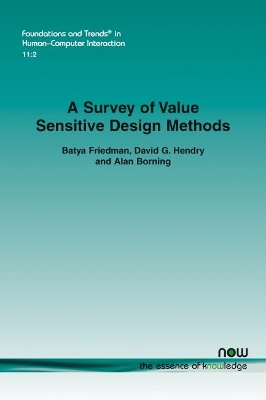Foundations and Trends in Human-Computer Interaction
1 total work
A Survey of Value Sensitive Design Methods
by Batya Friedman, David G. Hendry, and Alan Borning
Published 22 November 2017
Value sensitive design is a theoretically grounded approach to the design of technology that accounts for human values in a principled and systematic manner throughout the design process. A Survey of Value Sensitive Design Methods looks at 14 value sensitive design methods, each of which is honed to the investigation of values in technology, serving such purposes as stakeholder identification and legitimation, value representation and elicitation, and values analysis. While presented individually, the methods are intended to be integrated in a robust value sensitive design process. A Survey of Value Sensitive Design Methods begins with a summary of value sensitive design methodology and theoretical constructs. Having introduced the 14 methods, it turns to a broader discussion of value sensitive design practice, focusing on some methodological strategies and heuristics to support skillful value sensitive design practice. Following the broad discussion of practice, it illustrates one method in action—value scenarios—providing details on its range of purposes and contexts. It concludes with reflections on core characteristics of value sensitive design methods, and heuristics for methodological innovation.
